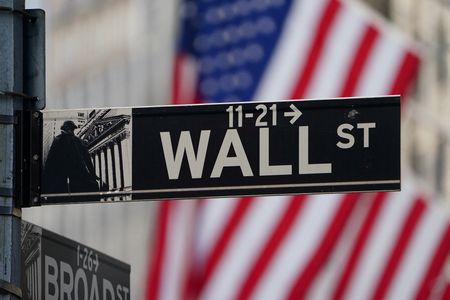
By Huw Jones
LONDON (Reuters) – Wall Street headed for a firmer start on Friday, though U.S. payroll figures before the opening bell will likely set the tone for the final session of a rollercoaster first week of trading in 2022 which saw new highs followed by heavy selling.
Oil was headed for its best weekly gains since mid-December, fuelled by supply worries amid escalating unrest in Kazakhstan, where an Internet shutdown hitting global computing power of the bitcoin network helped to send the cryptocurrency tumbling to its lowest level since September.
S&P 500 e-mini stock futures and Nasdaq futures were firmer ahead of non-farm payrolls data at 1330 GMT.
A stellar start to 2022 went into reverse on Wednesday after minutes from the Fed’s December meeting signalled the central bank may have to raise interest rates sooner than expected.
Some Fed policymakers also want to shrink the central bank’s $8 trillion-plus balance sheet as well as raise rates to quell decades-high inflation, the minutes showed.
Wall Street steadied by Thursday evening, though analysts at ING bank said the minutes were still reverberating across markets, driving bond yields higher, hitting growth stocks and keeping the dollar reasonably well-supported.
“We have non-farm payrolls today and will that have an effect on rate hike expectations? I don’t think it will”, said Michael Hewson, chief market analyst at CMC Markets. “The Fed is on a course to start gradual, incremental rate increases and the key question will be how many the markets will allow them to get away with and a lot of that will be down to guidance.”
Non-farm payrolls likely increased by 400,000 jobs last month after rising 210,000 in November, according to a Reuters survey of economists.
Goldman Sachs said its expects an above consensus rise of 500,000.
The MSCI All Country stock index was slightly firmer at 744.73 points, though still down 2% from a record high on Tuesday. In Europe, the STOXX index was slightly weaker at 487 points, also off about 2% from a record high on Tuesday.
Euro zone inflation rose unexpectedly last momth to 5% from 4.9% in November, a record high for the currency bloc, though unlike the Fed, the European Central Bank argues that prices will ease enough this year to avoid rate hikes.
Euro zone economic sentiment dropped more than expected as the Omicron variant of coronavirus sweeps across Europe.
CRUDE RALLIES, BITCOIN DOWN
Asian shares mostly rose on Friday, snapping two days of losses.
MSCI’s broadest index of Asia-Pacific shares outside Japan climbed 0.7%, boosted by gains in Australia where the local benchmark climbed 1.3%, led by bank stocks. Japan’s Nikkei was little changed.
An index of Hong Kong-listed mainland property stocks jumped 4.6% on media reports that Chinese policymakers plan to exclude debt accrued from acquiring distressed assets when assessing debt ratio compliance.
Investors are likely adjusting to “attractive, cheaper” Asian stocks as the year kicks off, said Jim McCafferty, joint head of APAC equity research at Nomura.
“With rates about to go up, from a global risk diversification point of view, investors are likely moving their money from U.S. markets into Asian markets, specifically China because it’s increasingly independent of what the U.S. does,” he said.
U.S. Treasury yields paused for breath, having risen sharply this week after the Fed minutes.
The yield on benchmark 10-year Treasury notes was last at 1.7266% having reached 1.7530% overnight, its highest since April 2021 and up sharply from its 2021 close of 1.5118%.
The dollar was set to notch broad weekly gains, hitting a five-year peak on the yen at 116.35 on Tuesday, hovering around 115.78 on Friday.
Oil prices rallied, which some analysts linked to news that Russian paratroopers had arrived to quell unrest in Kazakhstan, though production in the OPEC+ producer country remains largely unaffected so far.
Brent crude futures rose 0.5% to $82.54 a barrel, and U.S. crude rose 0.6% to $79.89.
Spot gold stood at $1,792 an ounce, slightly firmer on the day after touching a two-week low of $1,788.25 on Thursday, as rising U.S. Treasury yields hurt demand for the non-interest bearing metal.
Bitcoin dropped 1.7% to around $42,347 after hitting its lowest since late September as the hawkish Fed minutes also sapped appetite for riskier appetites.
(Reporting by Kanupriya Kapoor in Singapore, Stella Qiu in Beijing and Alun John in Hong Kong; Editing by Kenneth Maxwell, Edwina Gibbs, Elaine Hardcastle, William Maclean)

